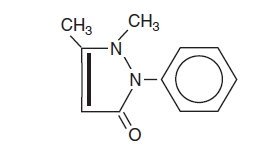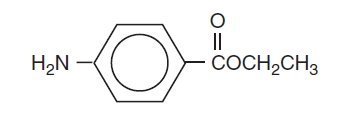Antipyrine and Benzocaine Ear Drops
Dosage form: otic solution
Drug class:Otic anesthetics
Medically reviewed by Drugs.com. Last updated on Jul 22, 2021.
Disclaimer: This drug has not been found by FDA to be safe and effective, and this labeling has not been approved by FDA. For further information about unapproved drugs, click here.
On This Page
DESCRIPTION:
Antipyrine and Benzocaine Otic Solution is an otic solution containing Antipyrine, Benzocaine, Oxyquinoline Sulfate, and Anhydrous Glycerin for use in the ear. The solution congeals at 0°C (32°F), but returns to normal consistency, unchanged, at room temperature.
Antipyrine is an analgesic with local anesthetic action, it is chemically 2,3-dimethyl-1-phenyl-3-pyrazolin-5-one. The active ingredient is represented by the structural formula:
C11H12N2O
Mol. Wt. 188.22
Antipyrine occurs as colorless crystals or white powder, has a slightly bitter taste and is soluble in water and alcohol.
Benzocaine is a local anesthetic. It is chemically ethyl p-aminobenzoate or Benzoic acid, 4-amino-, ethyl ester. The active ingredient is represented by the structural formula:
C9H11NO2
Mol. Wt. 165.19
It occurs as white crystals or white crystalline powder and is slightly soluble in water and soluble in organic solvents.
Each mL Contains: ACTIVES: Antipyrine 54 mg (5.4%), Benzocaine 14 mg (1.4%); INACTIVES: Glycerin, Oxyquinoline Sulfate.
CLINICAL PHARMACOLOGY:
Antipyrine and Benzocaine Otic Solution combines the hygroscopic property of anhydrous glycerin with the analgesic action of antipyrine and benzocaine to relieve pressure, reduce inflammation and congestion, and to alleviate pain and discomfort in acute otitis media.
Antipyrine and Benzocaine Otic Solution does not blanch the tympanic membrane or mask the landmarks and, t.





